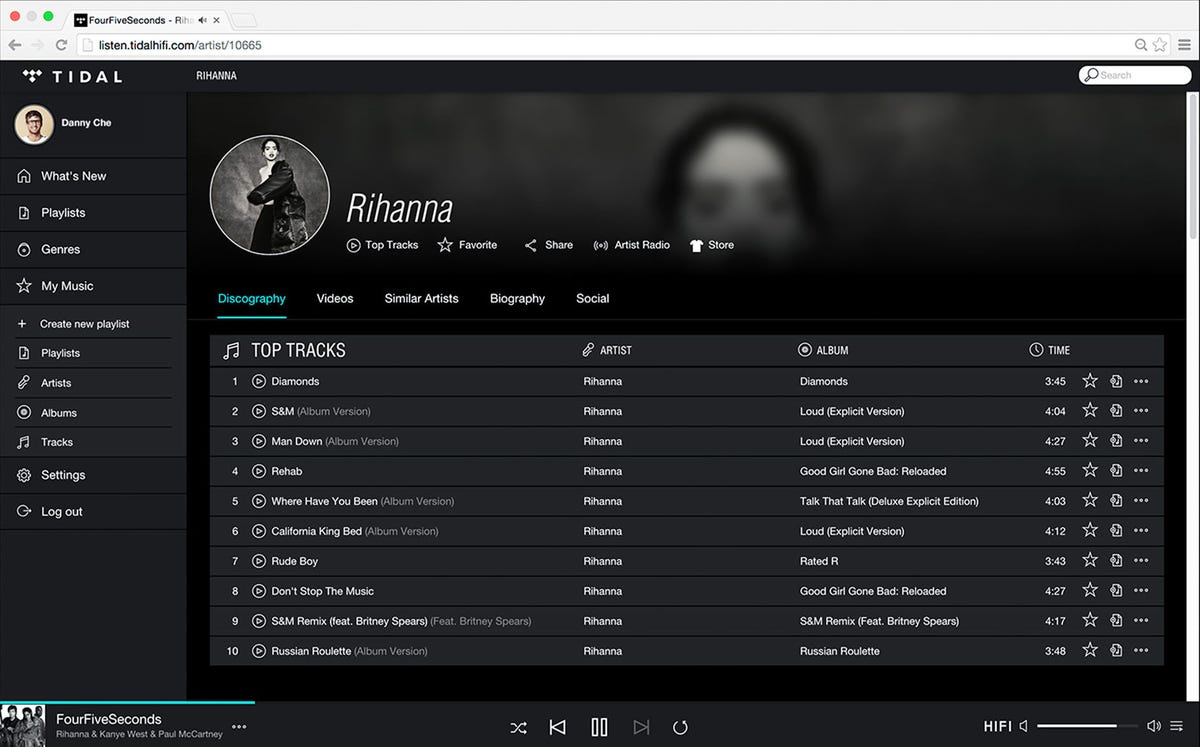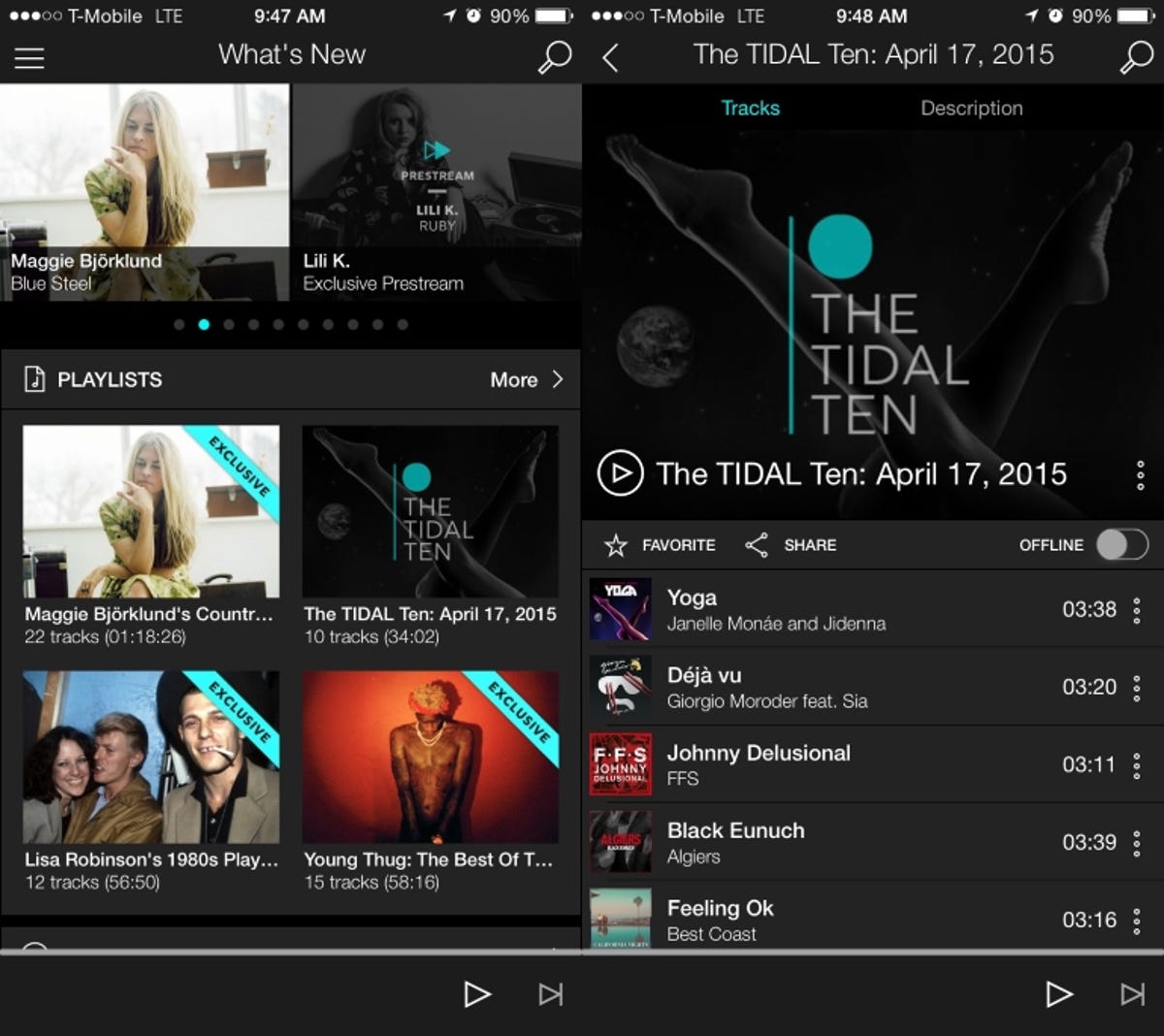
Screenshot/Claudia Cruz
Tidal made a splash in the streaming music scene thanks to its celebrity-studded re-launch that included the likes of Jay Z, Beyonce, Daft Punk, Kanye West, and Madonna — it was like a gathering of the musical Avengers.
It differentiates itself with lofty claims of high-quality streaming music at the premium price of $19.99, exclusive content from artists (including but not limited to those in attendance,) and paying artists (including but not limited to those in attendance) more royalties from streaming — something top competitor Spotify is often criticized about.
All of that sounded good to me and I was eager to sign-up. After months of having performance problems with my current beau, Spotify, I was ready to jump into something new and improved. I was ready to move — as Jay Z, owner of Tidal, once said — onto the next one. As a huge music nerd, this is my personal experience with Tidal, but stay tuned for CNET’s full review of the service soon.
Related articles
- Next in Apple’s crosshairs? Free music streaming at Spotify
- Why Spotify should ditch its free music option
- Spotify Connect: What it is and how it works
- 6 things to consider when choosing a streaming-music subscription
- Spotify, Rdio, Rhapsody and more: Which music streaming service is right for you?
Trying out Tidal
Instead of the lossless audio subscription, I signed up for the $9.99 option because I was looking for something to replace my current $9.99 Spotify subscription. Although I didn’t sign up for the high-quality streaming, I still noticed an audible difference between Tidal and Spotify.
Songs streaming with Tidal sounded fuller, with warmer tones that give bass a nice little oomph. In comparison, songs streamed on Spotify have crisper highs that sound harsher at loud volumes.
Unfortunately, Tidal took its time to load songs and often stopped mid-stream to buffer. Waiting 5 to 10 seconds for a song to play or buffer isn’t a big deal…if it’s 1998 and you’re using a 56K modem. These issues happened when I was connected to fast Internet connections and on T-Mobile’s 4G LTE network. Out of all of the streaming music services I’ve tried, only Rhapsody (the worst, in my experience) has offered a similarly frustrating experience.
Currently there’s no desktop application available, so streaming music on your computer means using a Web player. As someone who listens to music for a majority of their 9-to-5 desk job, I make heavy use of the navigation controls on the top row of my keyboard. Playing music through the browser didn’t allow me to control the music via the keys, causing me to open the consistently minimized window to simply skip or pause a song. A minor inconvenience, but an inconvenience nonetheless.


Screenshot CNET
A sucker for sleek aesthetics, I found the simplicity of the Tidal Android app enticing. However, its performance quickly turned me against it. One of the biggest deal breakers was the consistent bugginess of the app. Crashing and freezing (sometimes both) was the performance status quo. If I used the app for more than an hour with no problems, I was shocked and mildly impressed.
A nice addition to the Tidal app is the built-in audio search, similar to Shazaam and Soundhound. I often use the latter apps to discover new music, but Tidal’s version didn’t work nearly as well as them.
Troubleshooting support with Tidal is also abysmal. Not that Spotify is any better, however Tidal is so new, not even smart strangers on Internet forums have quick fixes for performance problems.
Tidal’s execution lacks the finesse necessary to keep new users away from veteran services like Spotify and Pandora. No amount of exclusive content is persuasive if basic functionality is severely lacking.


Screenshot by Sarah Mitroff/CNET
And the winner is…
I cancelled my Tidal subscription after one month. I didn’t receive a call from Jay Z, but I did get a pair of emails which proclaimed Tidal was sorry to see me go. The messages also divulged why I should stay, and one curiously inquired if I had made a mistake and accidentally unsubscribed. It felt like a string of emails from an ex who’s in denial.
I wholeheartedly believe in compensating artists for their work and I approve of Tidal’s goal. Putting money back into the hands of creators is a commendable effort, however, masquerading the for-profit streaming service as a social movement about supporting the arts is ridiculous.
At the end of the day, I am a consumer not a philanthropist, and I want the service I pay for to meet my expectations — or at least the standards set by its competition. Due to my lackluster experience trying out Tidal, I’m sticking with Spotify for now, not out of loyalty, but because it’s currently the best streaming service for my needs. Look for CNET’s full review of Tidal soon.




